Daine Singer
Melbourne
9 February–19 March
2022
Solo Exhibition
About the Exhibition
Exhibition Text by Alice Wormald
Media
About
For Small Variations, Alice Wormald has created an exhibition of paintings depicting three-dimensional arrangements of paper, cardboard and found images. Some of the works are painted on linen, while others are freestanding, double-sided paintings on glass with small coloured acrylic feet. In creating these works Wormald has first crafted sculptural pop-out constructions of paper and cardboard which feature collaged imagery sourced from homemaking and handicraft books. She has then used these constructions as models for her paintings.
The scenes within the paintings are guided by the light, depth, colour and form created by the paper sculptures and their backdrops. The works bring together Wormald’s interests in form, perception and domestic crafts and reflect on the process of image making. Often tightly bound, the compositions feature floating structures that guide fragmented imagery over and between cuts and folds. The practice of pasting, folding and crafting the sculptural models from makeshift materials imbues them with a handmade quality that is honoured through the process of painting. The artist allows each work, through a process of making, obscuring and reworking, to reach its own unnamable state.
Exhibition Text
Alice Wormald: Small Variations
In the 1950s, Italian artist and designer Bruno Munari produced a series of portable folded cardboard sculptures he titled ‘Scultura da viaggio’ (Travel Sculptures). He envisioned the sculptures being carried by travellers to accompany them on their journeys. The sculptures were flat packed and designed to be unfolded and displayed in the travellers’ accommodations to provide a sense of aesthetic comfort and inspiration in otherwise anonymous spaces. Travellers could look upon them and contemplate the places they had visited while being accompanied by Munari’s forms.
I first encountered Munari’s travel sculptures at a retrospective of his work at Setagaya Art Museum in the suburbs of Tokyo. In the final days of our trip to Japan in late 2018, Tommy and I happened upon a poster for the exhibition, which was titled Bruno Munari: The Man Who Made the Useless Machines. We were both fans of Munari’s influential book Design as Art and so we decided to weave the exhibition into a visit to Yokohama’s Hara Model Railway Museum that we had planned for our last day before returning home.
The model railway museum houses the collection of the late Japanese train enthusiast Nobutaro Hara, who travelled the world to ride on trains and collect models. Highlights of the collection are an exquisite model train that Hara built at the age of thirteen as well as multiple working model railways. Browsing through Hara’s photo archive, we found photos of Connex trains that Hara had taken during a trip to Melbourne in the early 2000s. I remembered myself as a studious but painfully self-conscious teen going to and from school, endlessly rushing, waiting for or travelling on those trains during the time that Hara took these pictures. There was something both unsettling and exciting about suddenly being reminded of something so familiar, but from another time and from such a distant place – like a geographical anachronism.
After the model train museum, we took the bus to Setagaya to visit the Munari retrospective. The exhibition was expansive and included sculptures, paintings, collages, drawings, artist books, children’s books and hanging mobiles among sketches, posters and experiments. My impression was that Munari was someone who truly loved to make things as a way of building purpose into his life, and I experienced the affirmation that comes from recognising some of your own interests and pursuits in the work of an artist whom you admire. By the time we left the museum, it was dark. We walked through the park surrounding the museum, where park lamps illuminated the ginkgo leaves that blanketed the ground, forming big soft yellow circles. Tommy and I had both enjoyed the exhibition so much that we each bought a copy of the catalogue to take home. It was in Japanese and Italian, but even though we couldn’t read it we could look at the pictures and hold onto the memories of Munari’s exhibition and that last day before we returned to our normal lives.
In mid-2020, I was trying to gather some images for collages from the few books I’d collected in the gap between lockdowns. Looking through Tommy’s copy of the Munari catalogue (mine was inaccessible at my studio), the artist’s Travel Sculptures stood out. Their lines, forms and negative spaces reminded me of the intricate instructions for folding, cutting and braiding in the handicraft books I was using for my collages. I started making my own pop-up structures with cardboard and the found images that I had with me at home. My practice became about focusing on a small amount of material that I could work at making work for me, rather than looking outwards and becoming overwhelmed by options and decisions: details, small variations, things that are close at hand.
The work of an artist is often punctuated by periods of expansion and periods of inward focus, and the experiences, thoughts and objects that accompany us during these times. Like one of Munari’s travel sculptures, the catalogue that I bought became embedded with my memories of that day, and offered its own aesthetic comfort and inspiration. It was so valuable to be able to draw on this connection during a period when life, activity and travel were so limited by restrictions and lockdowns. I made my own travel sculptures without leaving my house, and through painting them I wrote my thoughts and experiences into their folds, surfaces and negative spaces.
Media
“Alice Wormald’s paintings are like puzzles. They tear apart space and time only to rebuild the world in disparate perspectives, creating shards of overlapping, intersecting images, shapes, lines and patterns. There is no foreground or background, or any sense of time: it’s science fiction meets Wormald’s loyalty to the formalism of painting. For more than a decade the Melbourne artist has painted these impossible scenes, and her show at Daine Singer continues this trajectory. Interestingly the starting point for these paintings on linen and glass are collage sculptures — which aren’t exhibited — that Wormald creates from paper, cardboard and found images from homemaking and handicraft books. These sculptures are inspired by the 1950s Italian artist Bruno Munari, who created portable, foldable cardboard sculptures for travellers to assemble as they journey, as sources of comfort in a new place. Carrying this information to Wormald’s paintings provides insight, but doesn’t truly explain how the artist simultaneously removes us from, and delivers us to, reality.”
– Tiarney Miekus, The Age, 26 February 2022
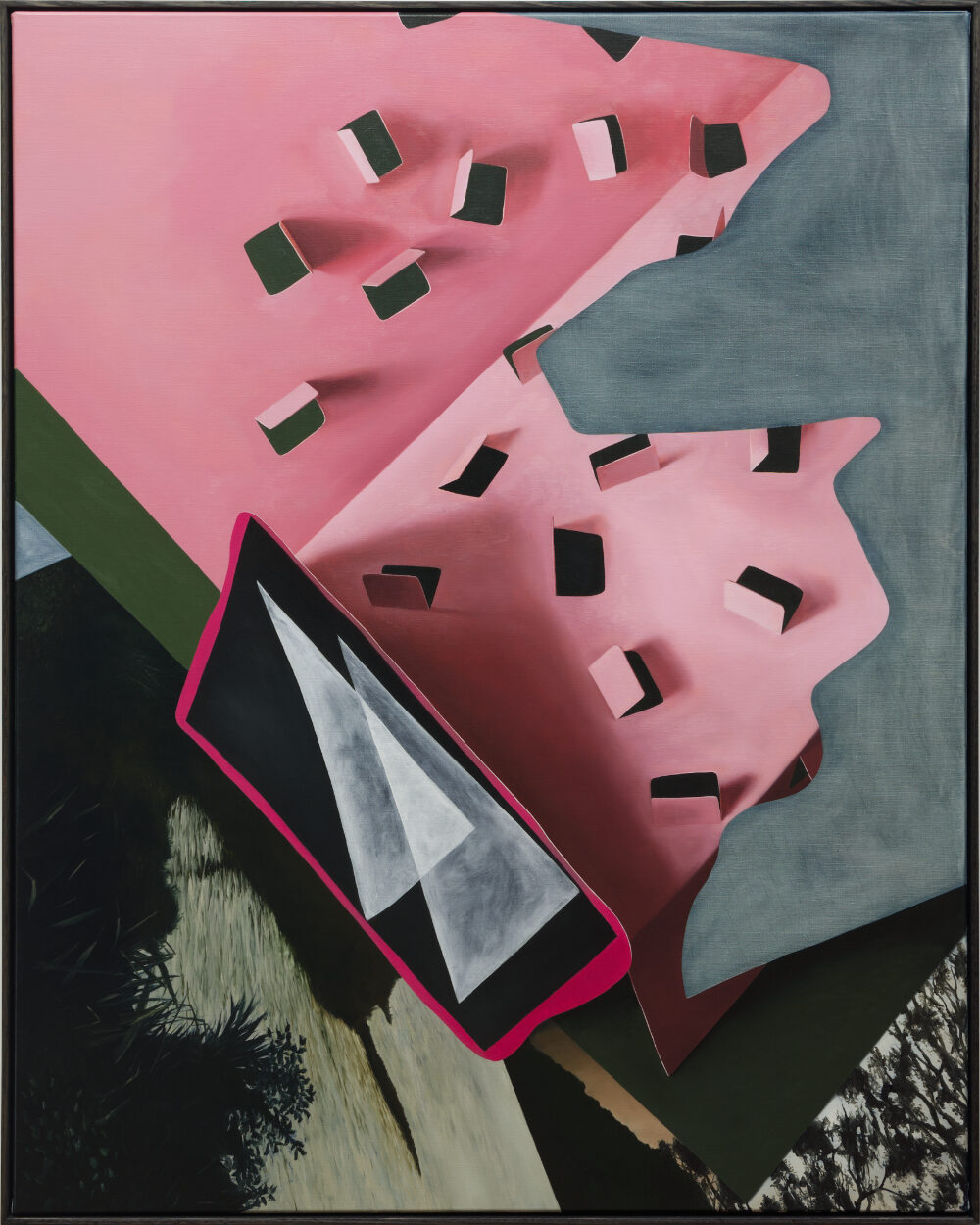
Perpetual Emotion
2022
Oil on linen
125 x 100cm
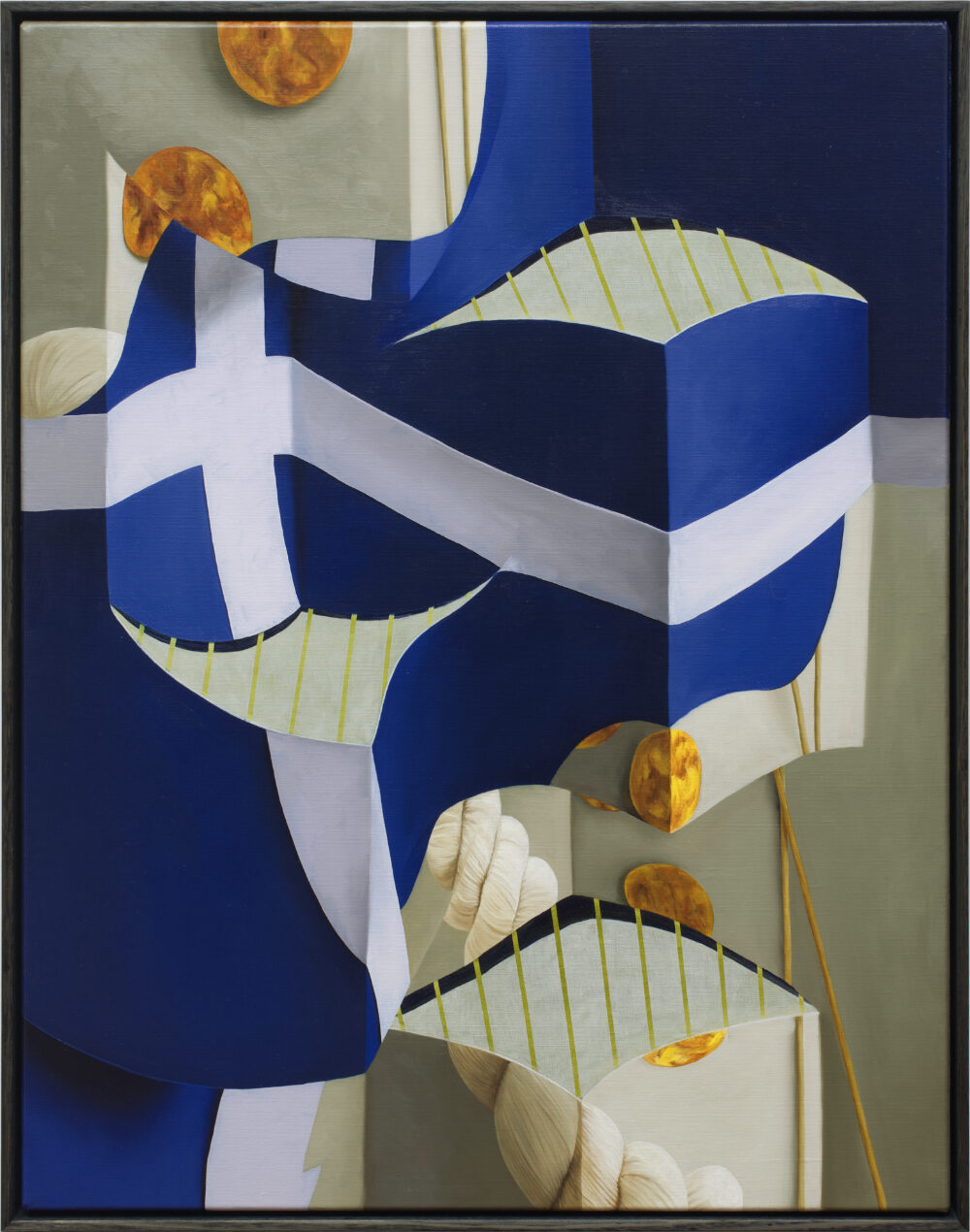
Amber Wrap
2022
Oil on linen
75 x 59cm
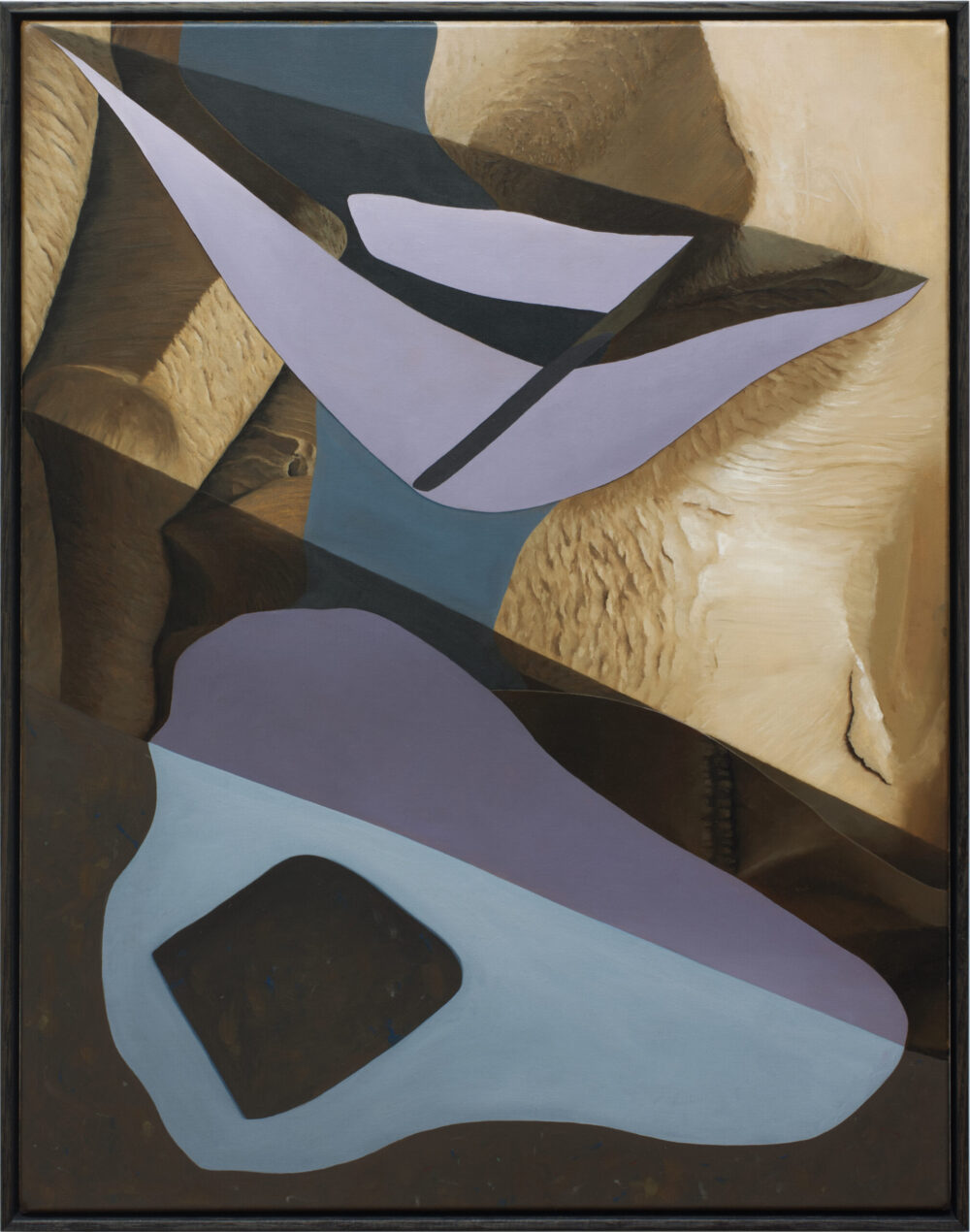
Unfolding Out
2022
Oil on linen
75 x 59cm
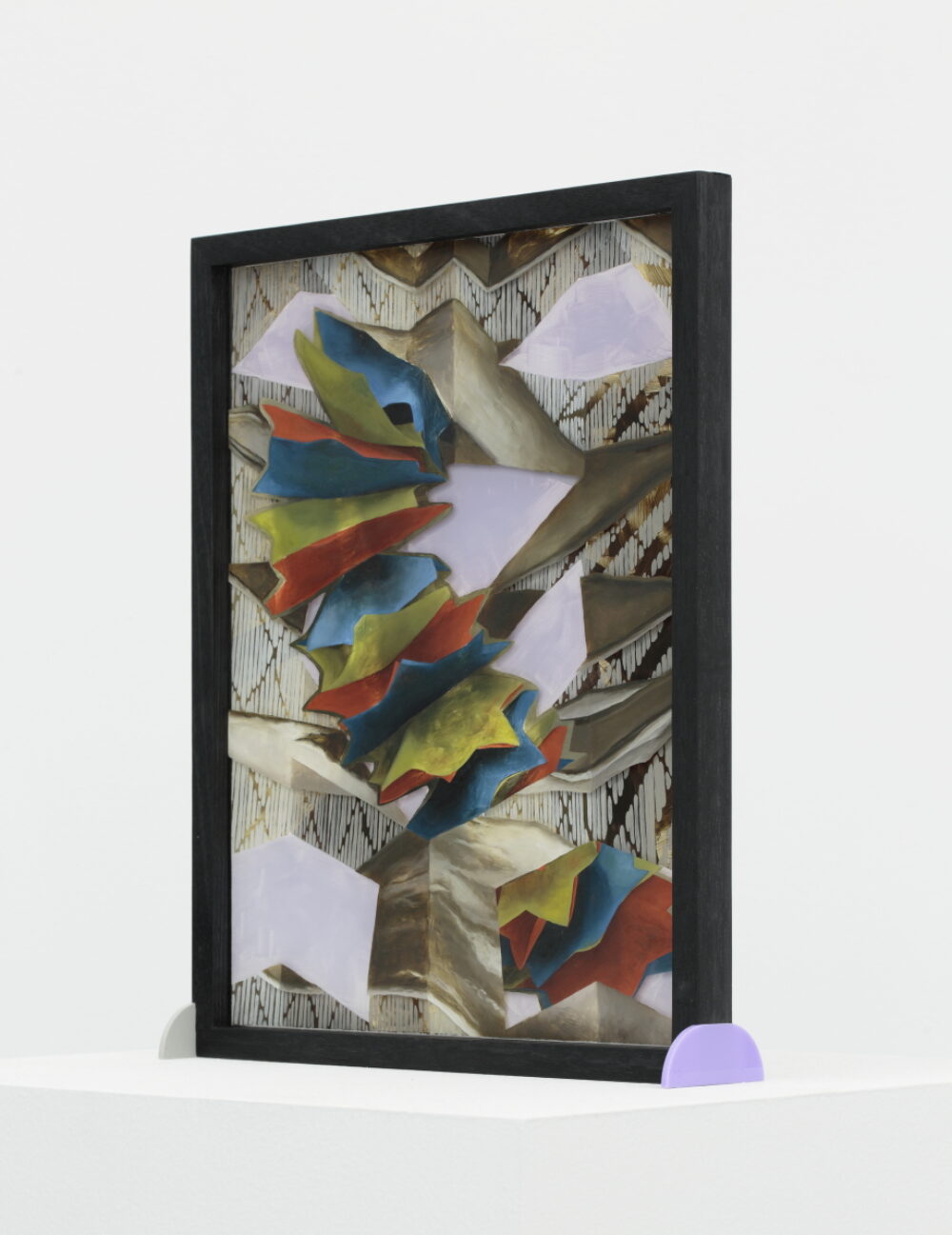
Garland
2021
Oil on front and back of glass, freestanding frame with acrylic feet
37 x 29.5 x 6.5cm
Photo by Tim Gresham
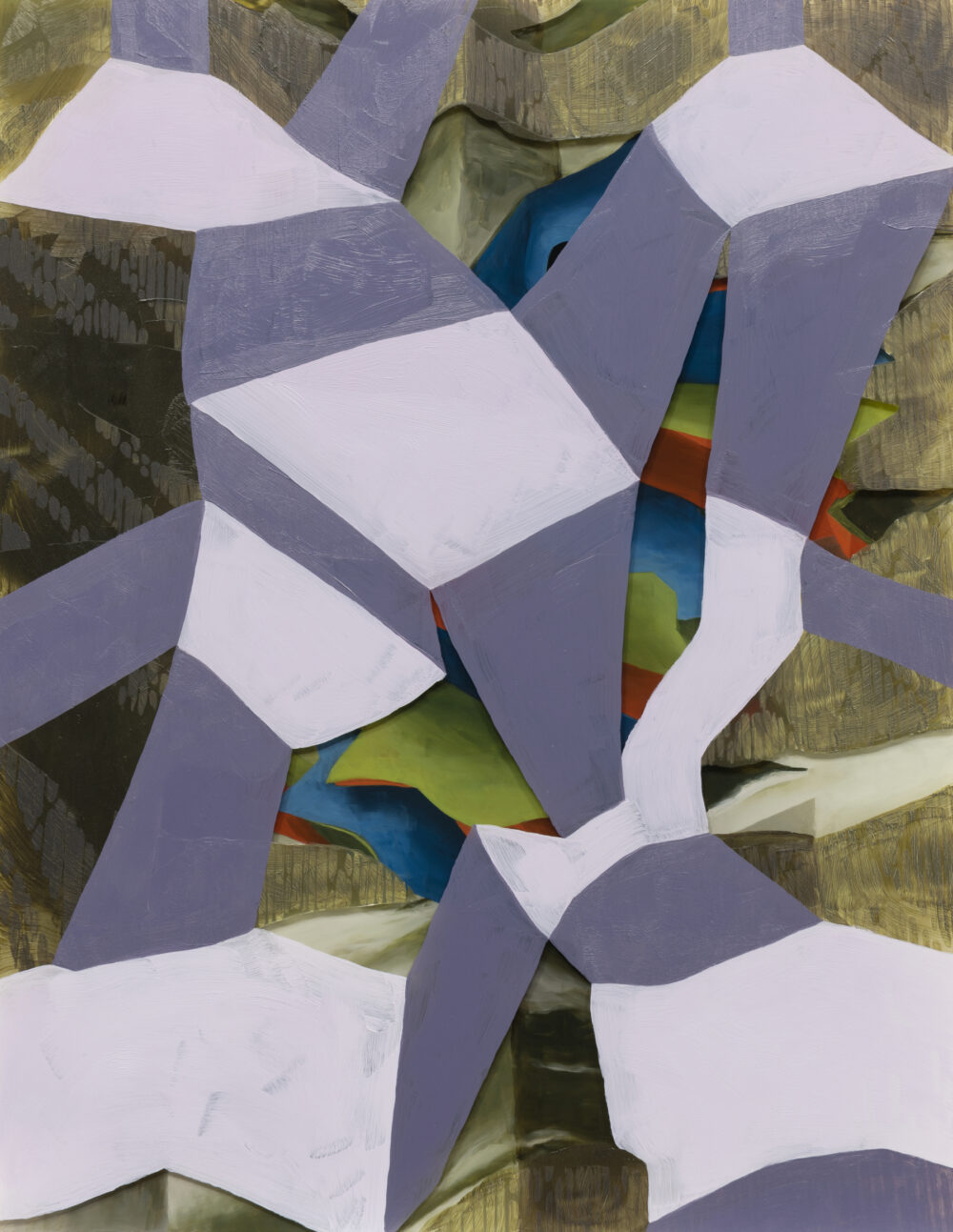
Garland
Back view
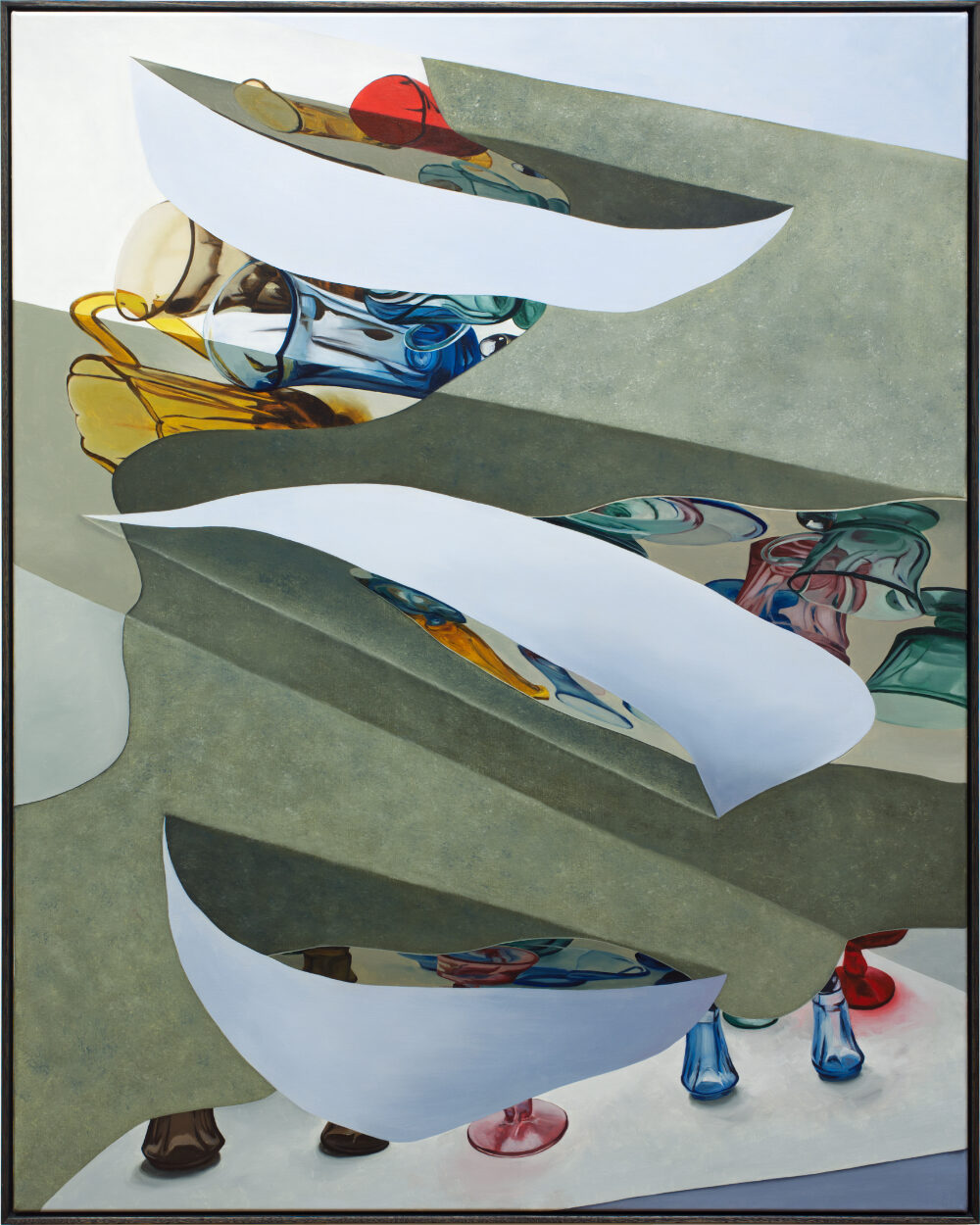
Small Variations
2022
Oil on linen
125 x 100cm
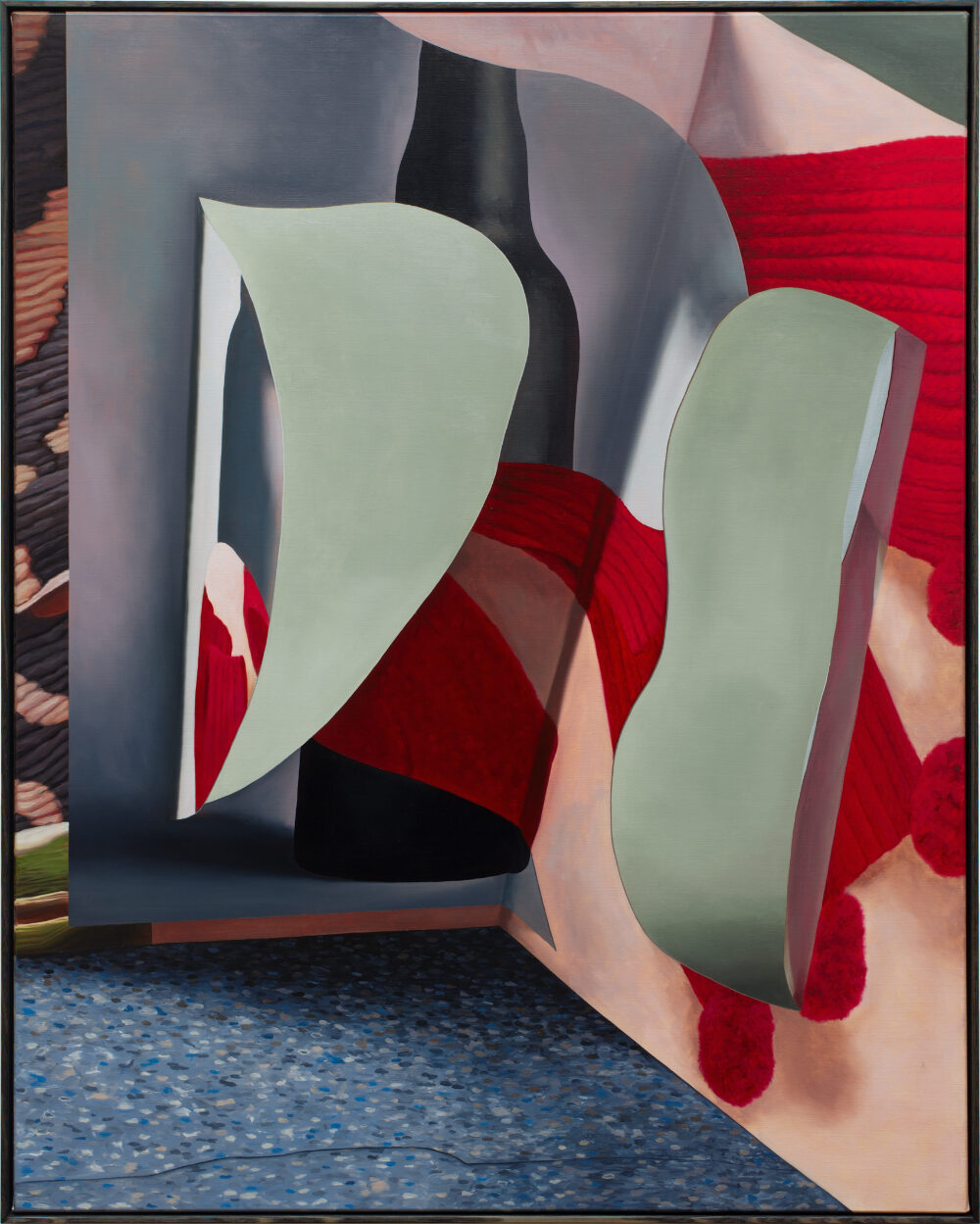
Restless Interactions
2022
Oil on linen
125 x 100cm
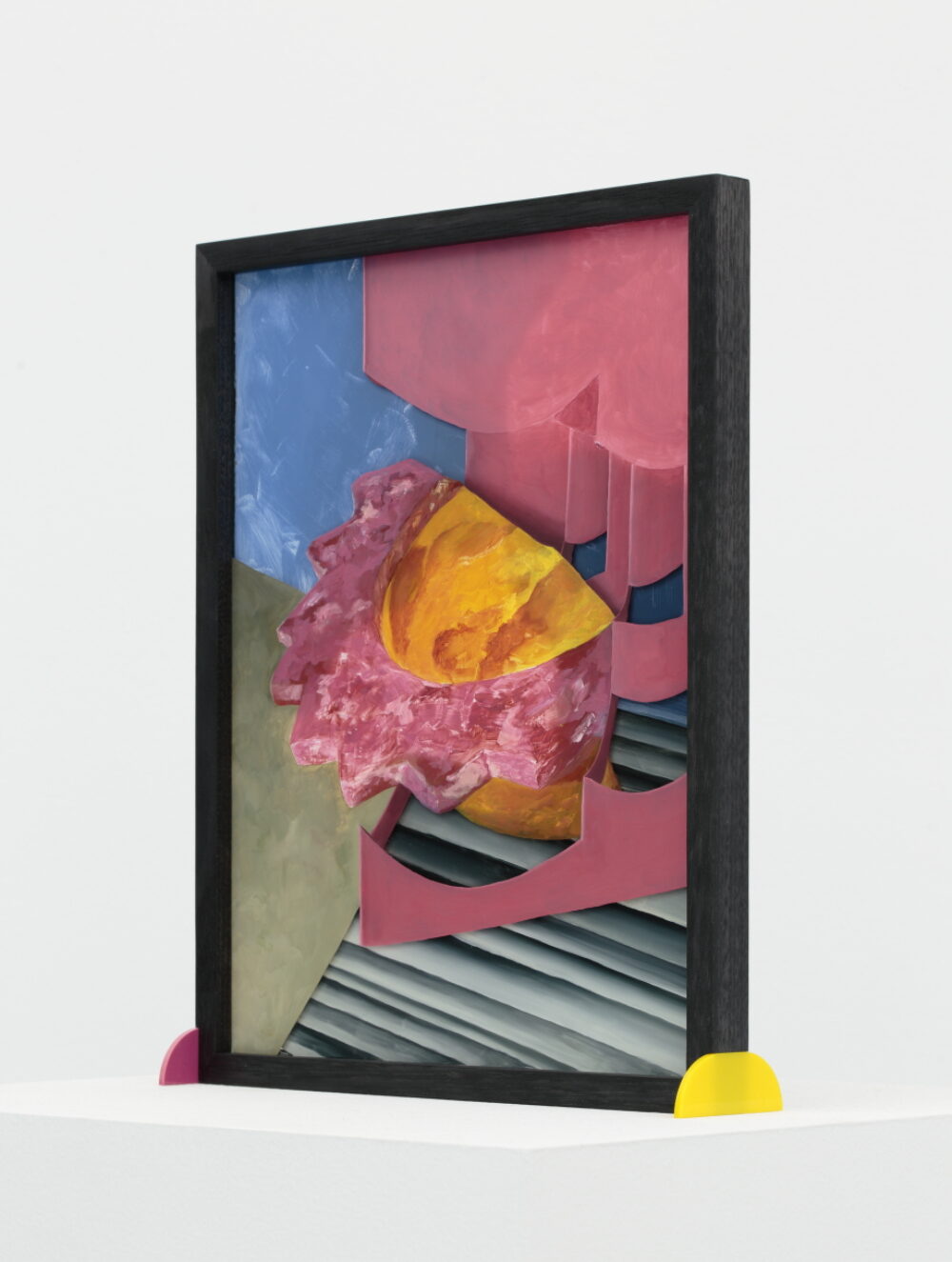
Pink Sun
2021
Oil on front and back of glass, freestanding frame with acrylic feet
37 x 29.5 x 6.5cm
Photo by Tim Gresham
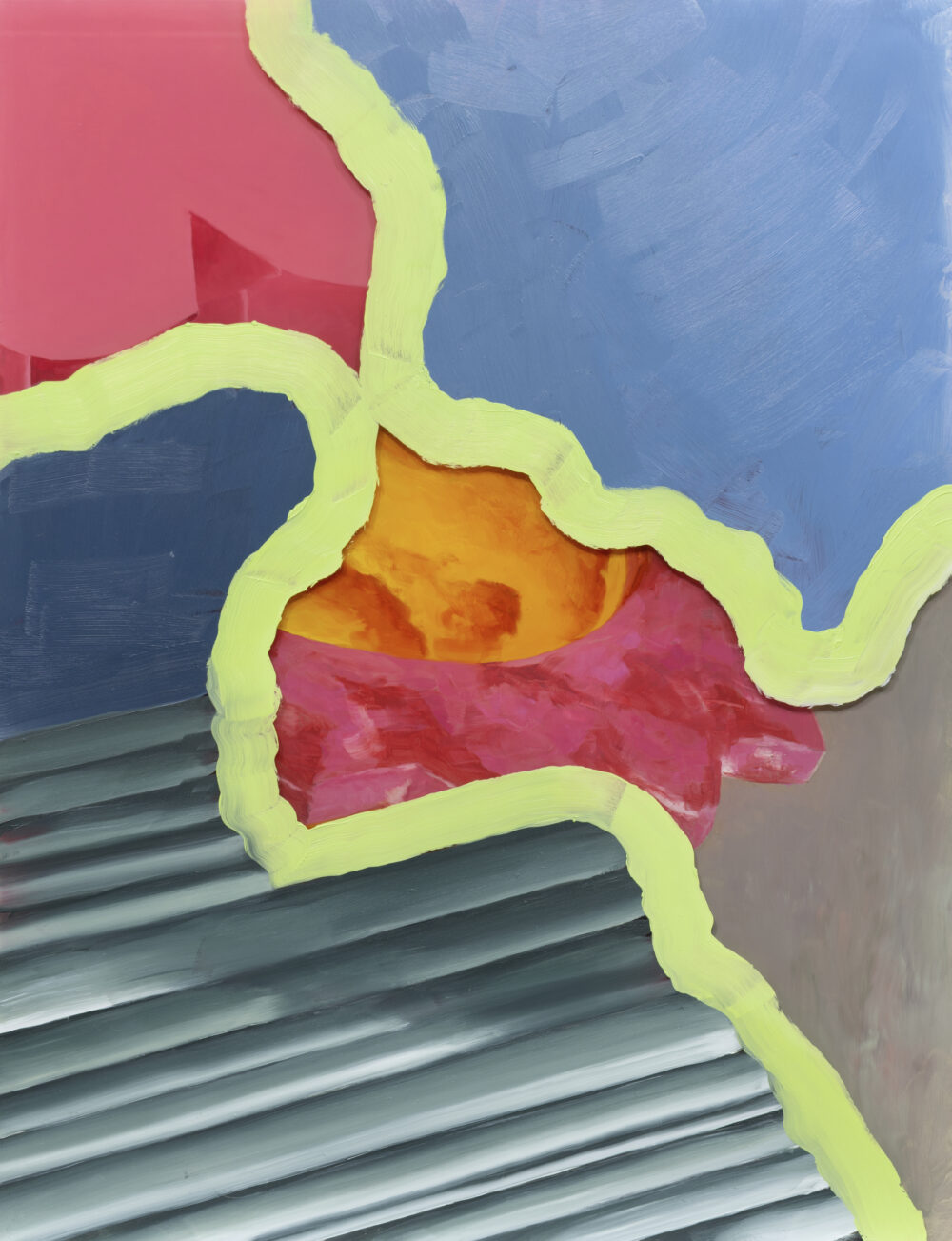
Pink Sun
Back View
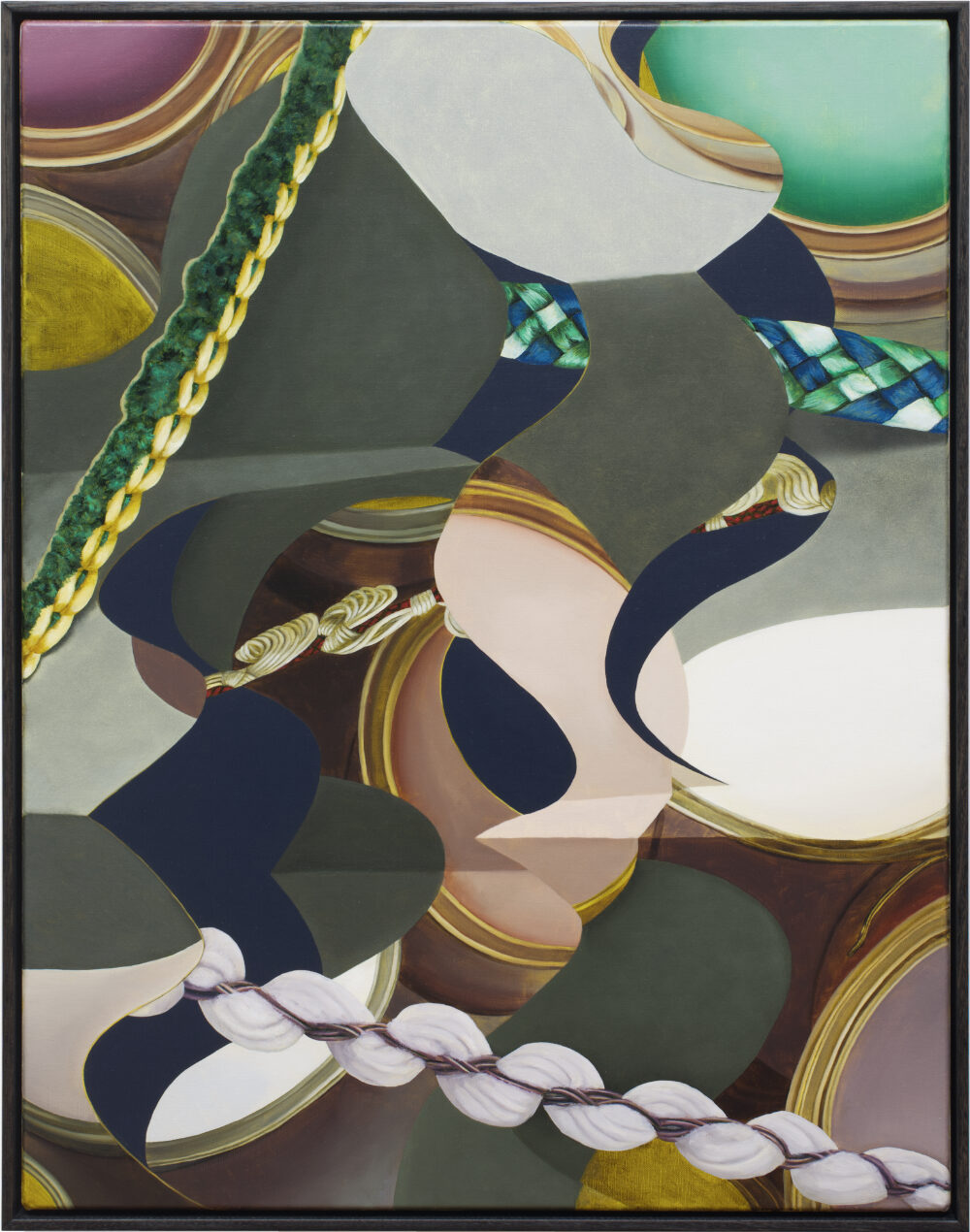
Redecorating
2022
Oil on linen
75 x 59cm
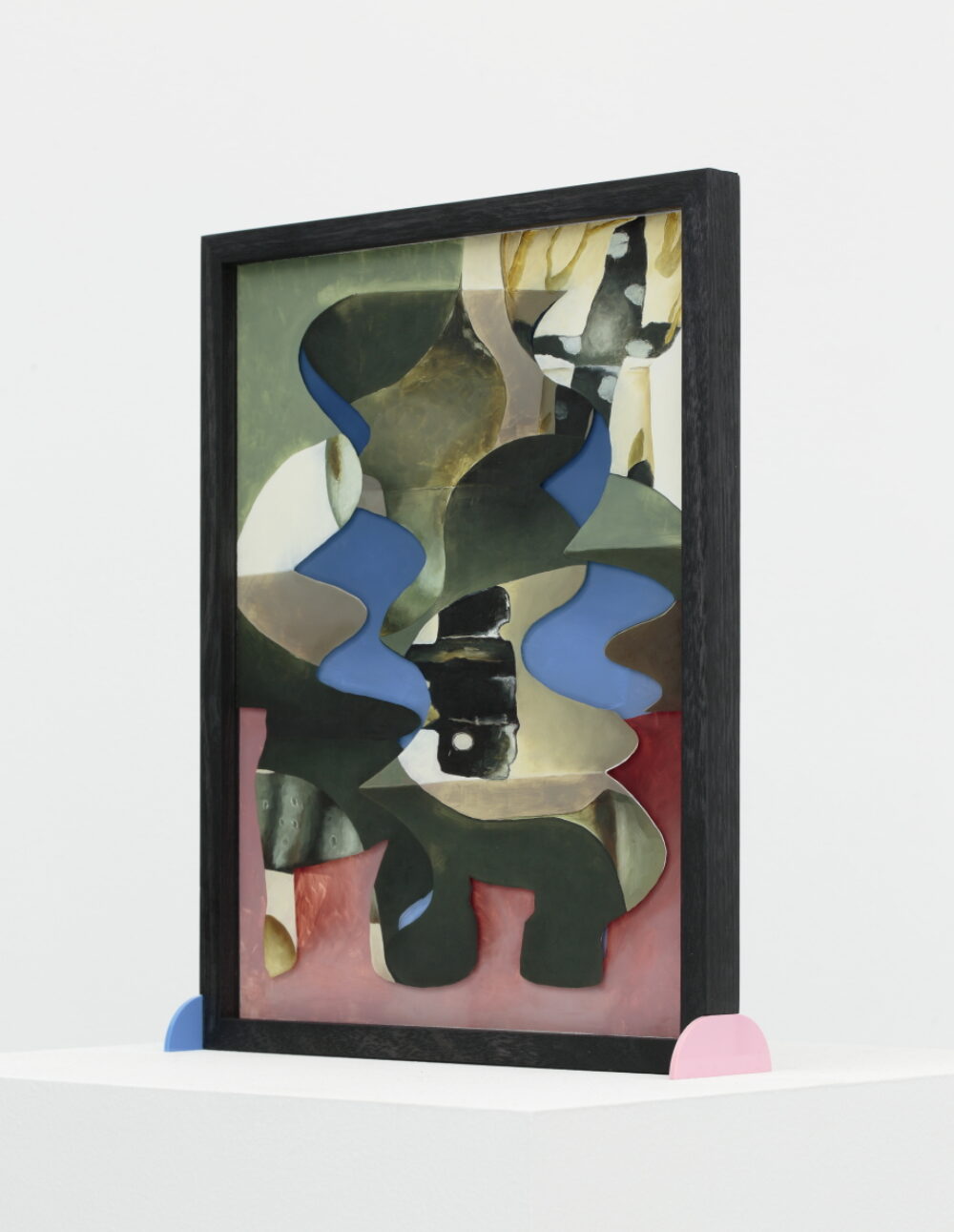
Standing on Three Feet
2021
Oil on front and back of glass, freestanding frame with acrylic feet
37 x 29.5 x 6.5cm
Photo by Tim Gresham
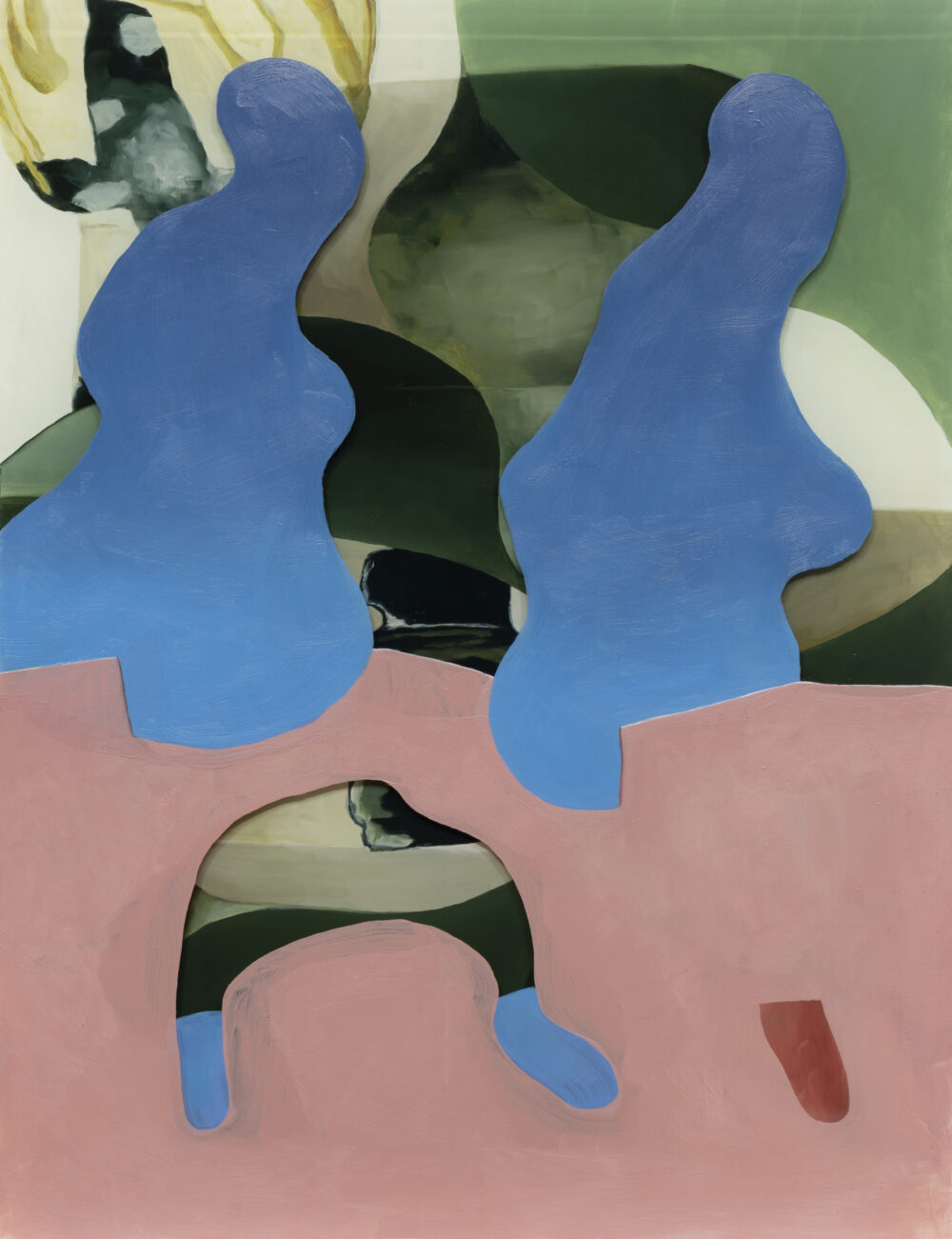
Standing on Three Feet
Back view
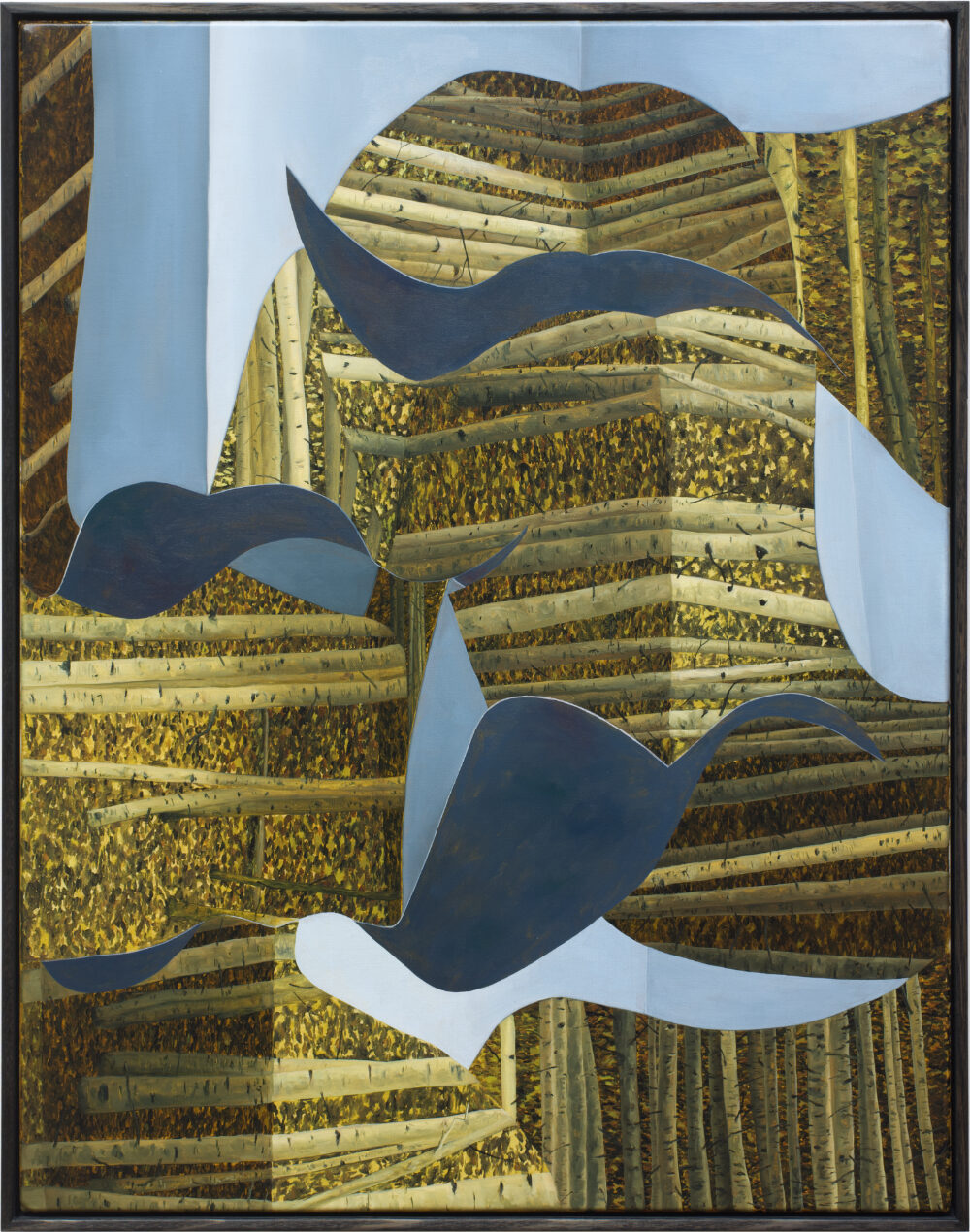
Forest Voice
2022
Oil on linen
75 x 59cm
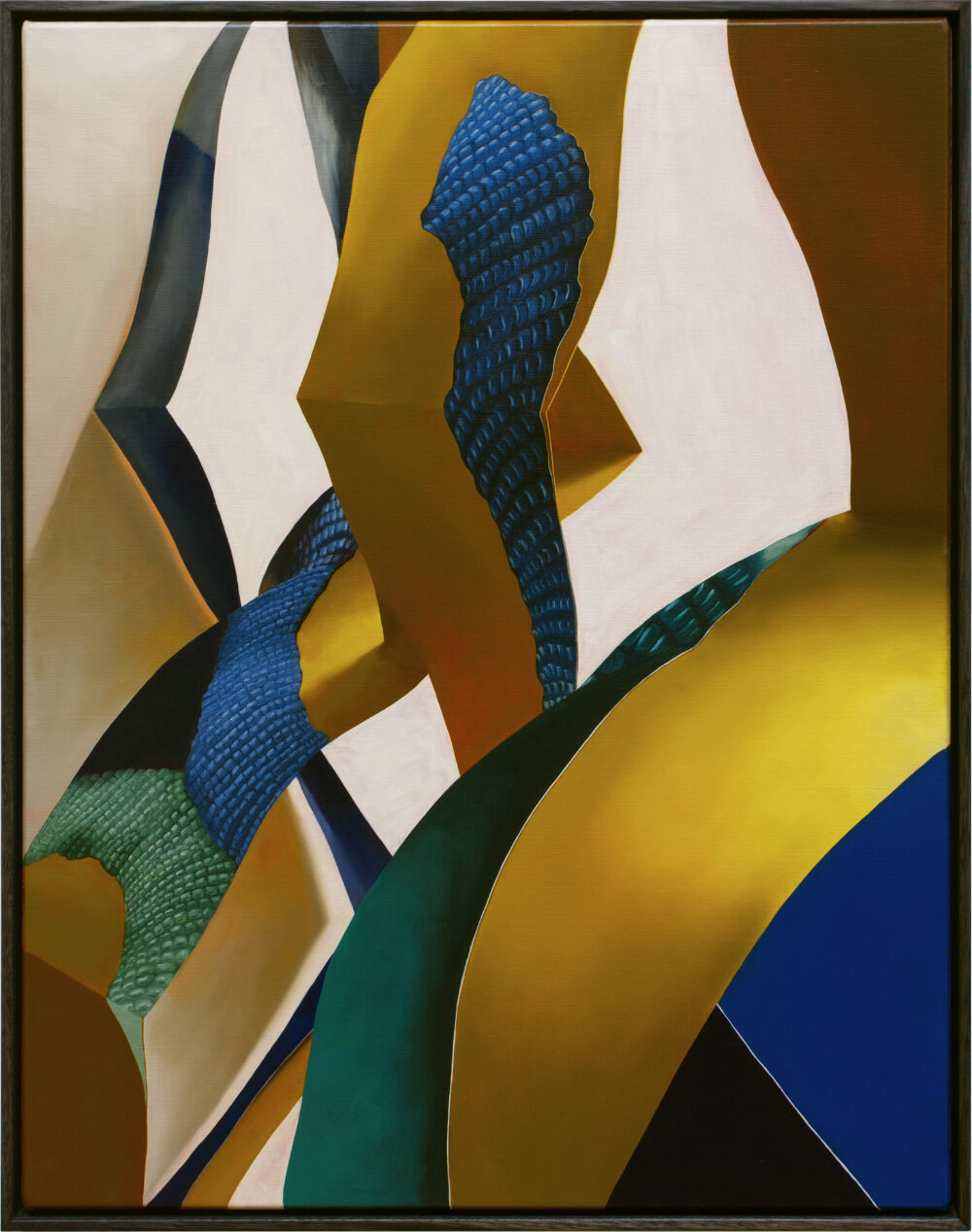
Bright Eyes, Bright Edges
2022
Oil on linen
75 x 59cm
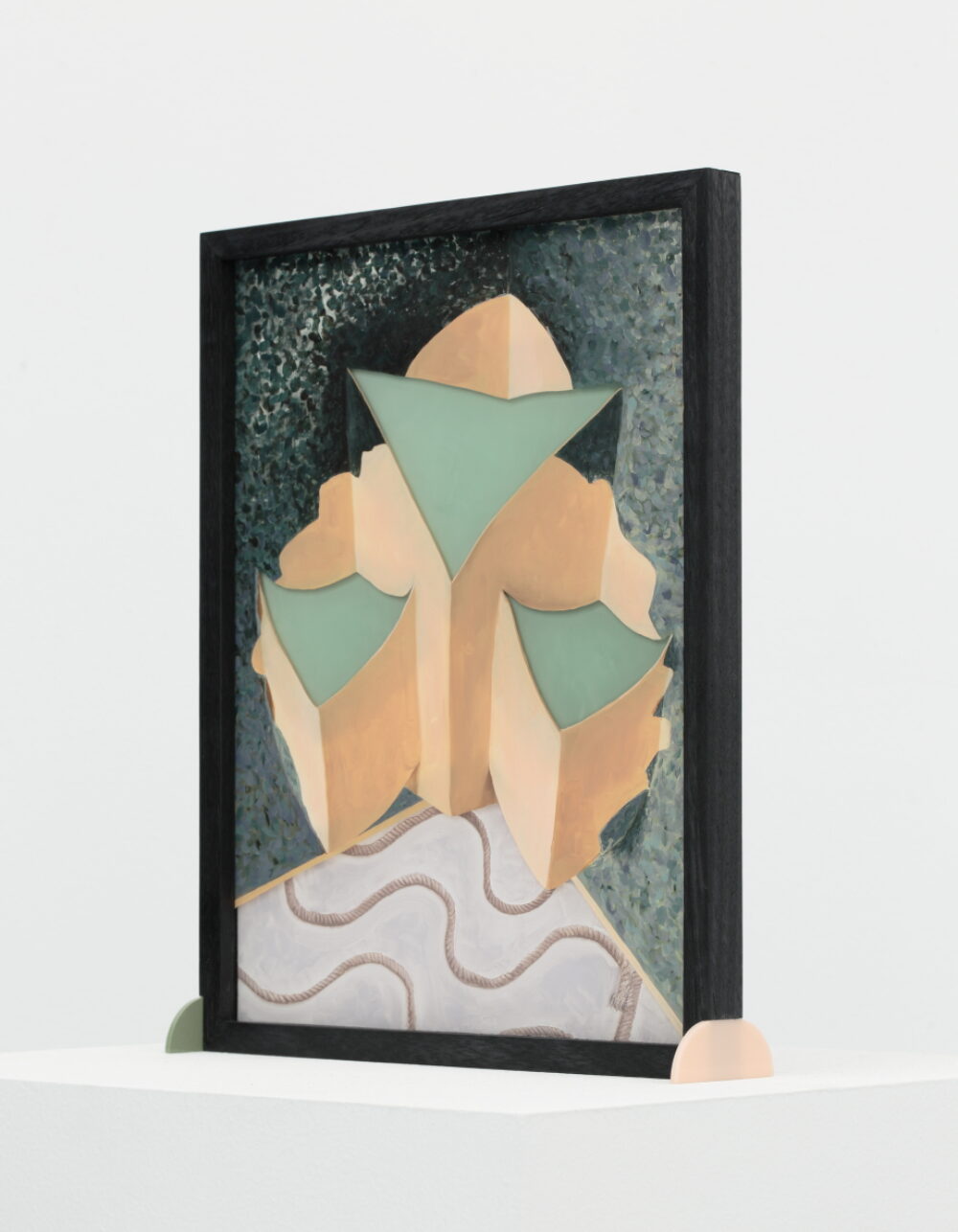
Rope Openings
2021
Oil on front and back of glass, freestanding frame with acrylic feet
37 x 29.5 x 6.5cm
Photo by Tim Gresham
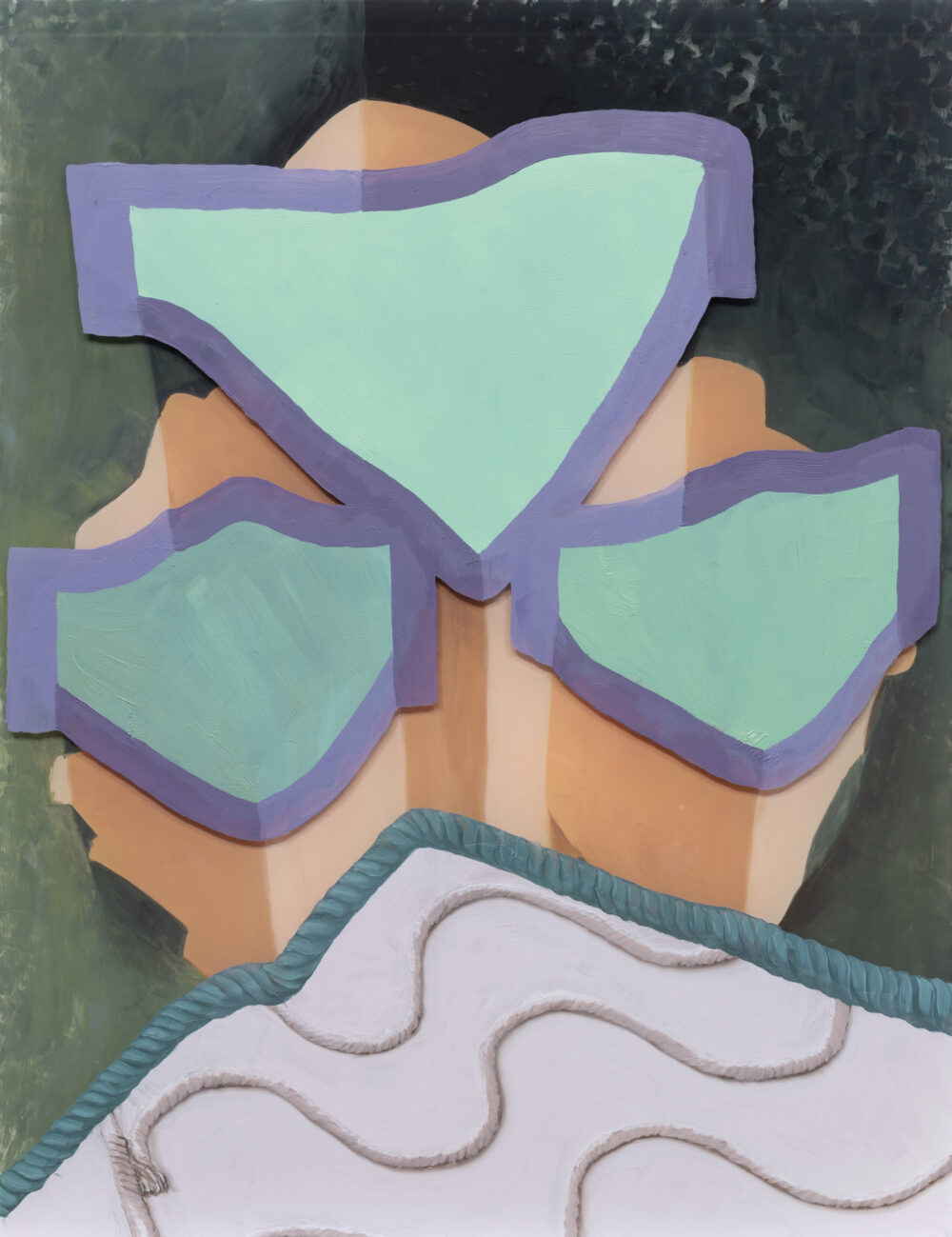
Rope Openings
Back view
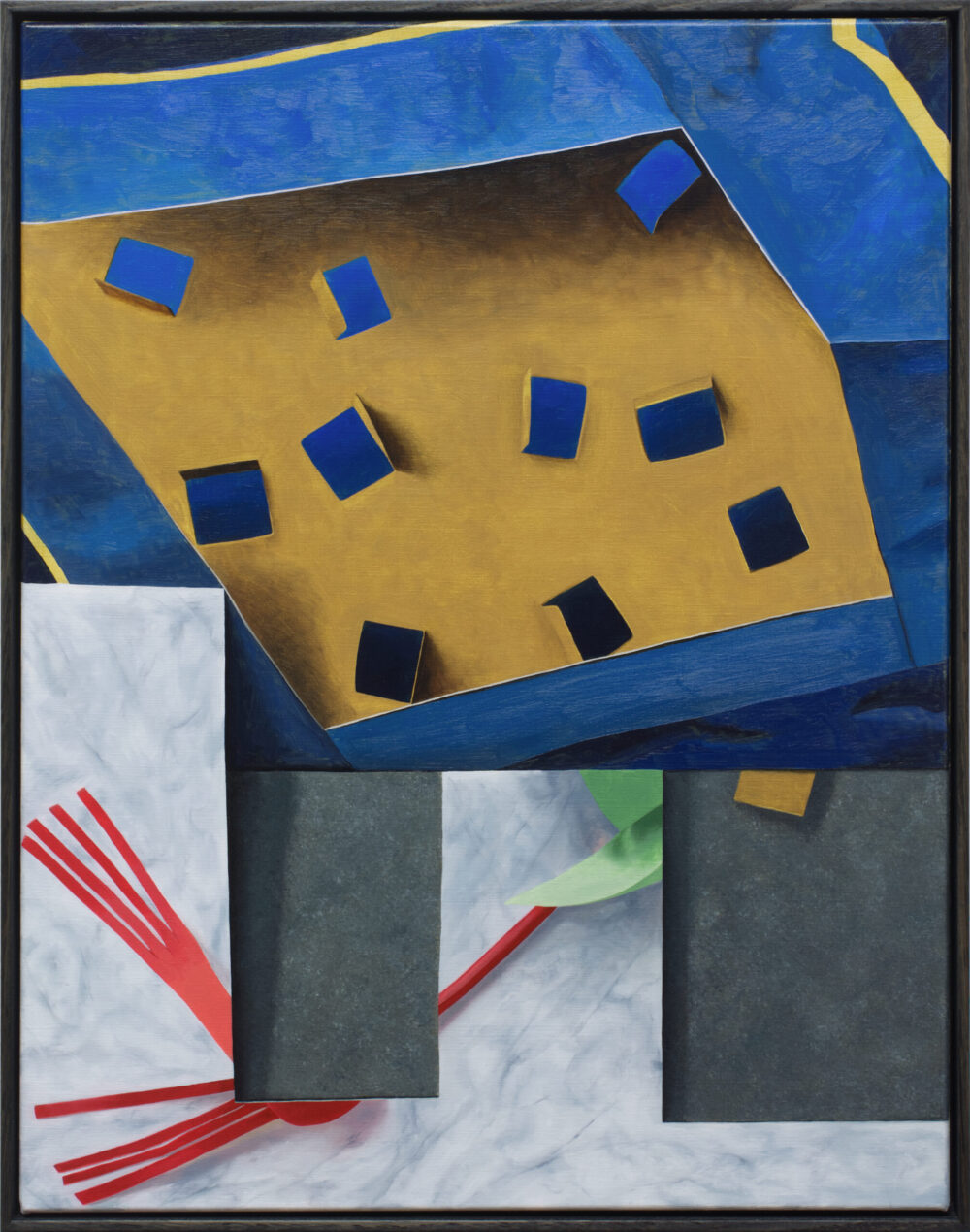
Big F
2022
Oil on linen
75 x 59cm
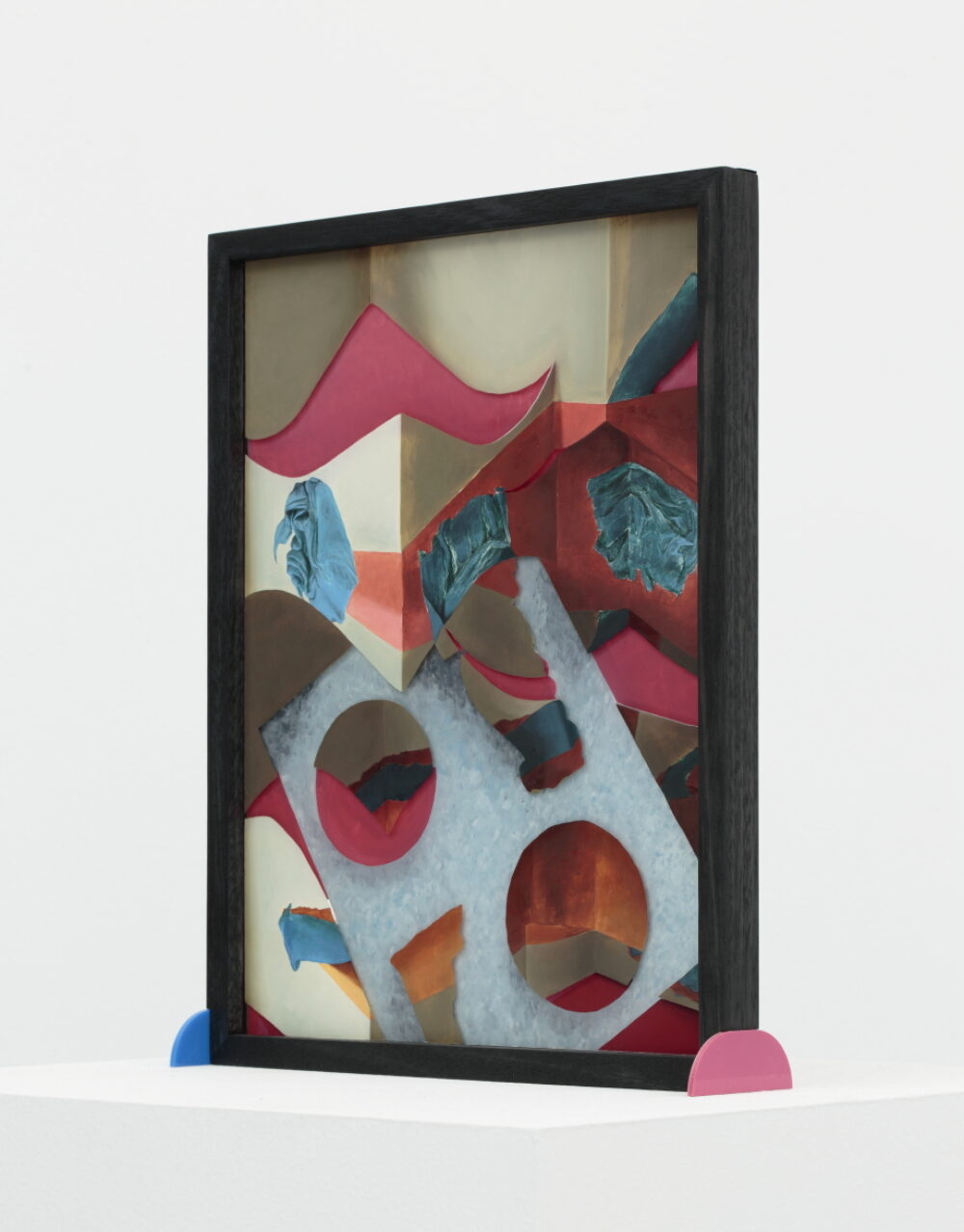
Circle Silhouette
2021
Oil on front and back of glass, freestanding frame with acrylic feet
37 x 29.5 x 6.5cm
Photo by Tim Gresham
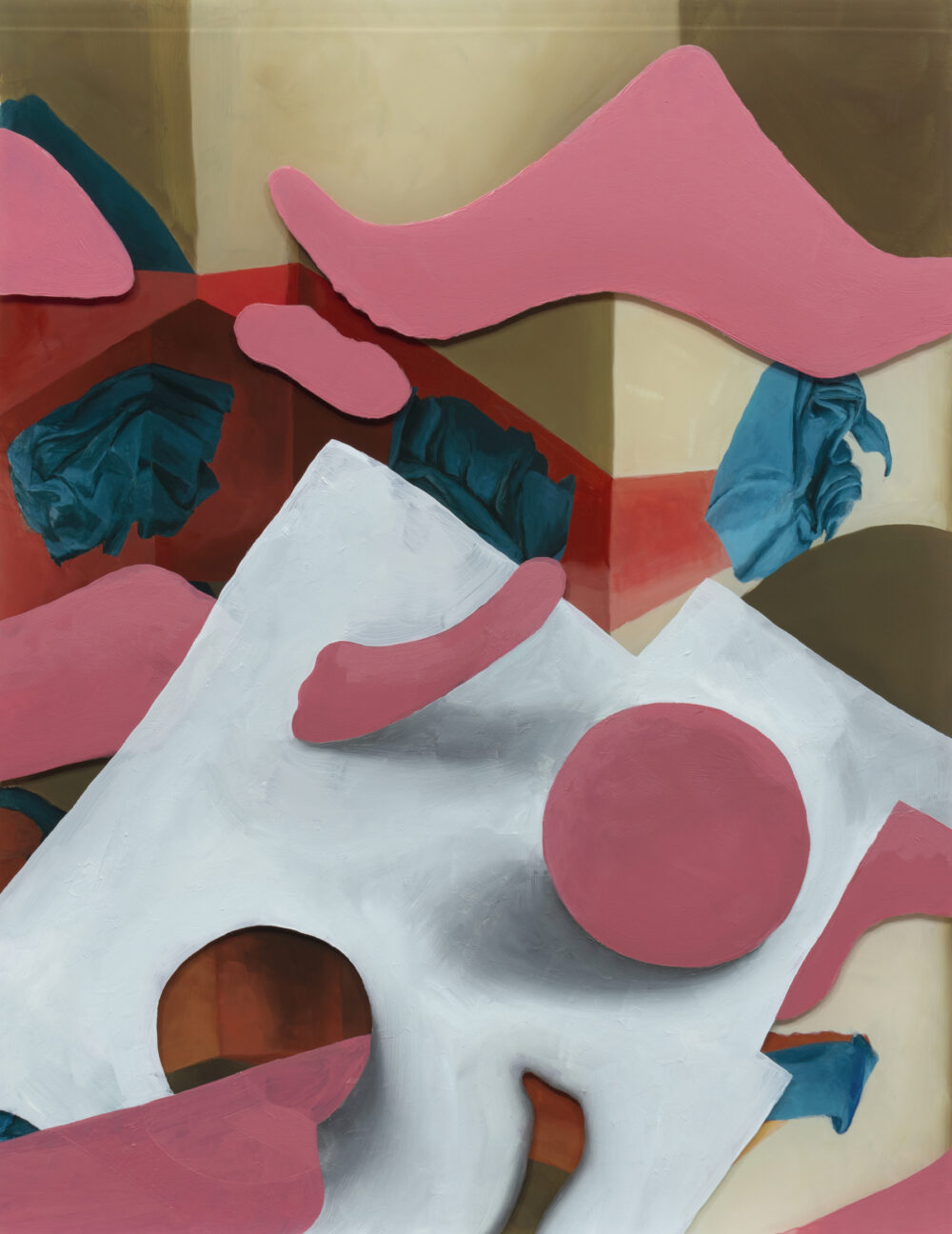
Circle Silhouette
Back view
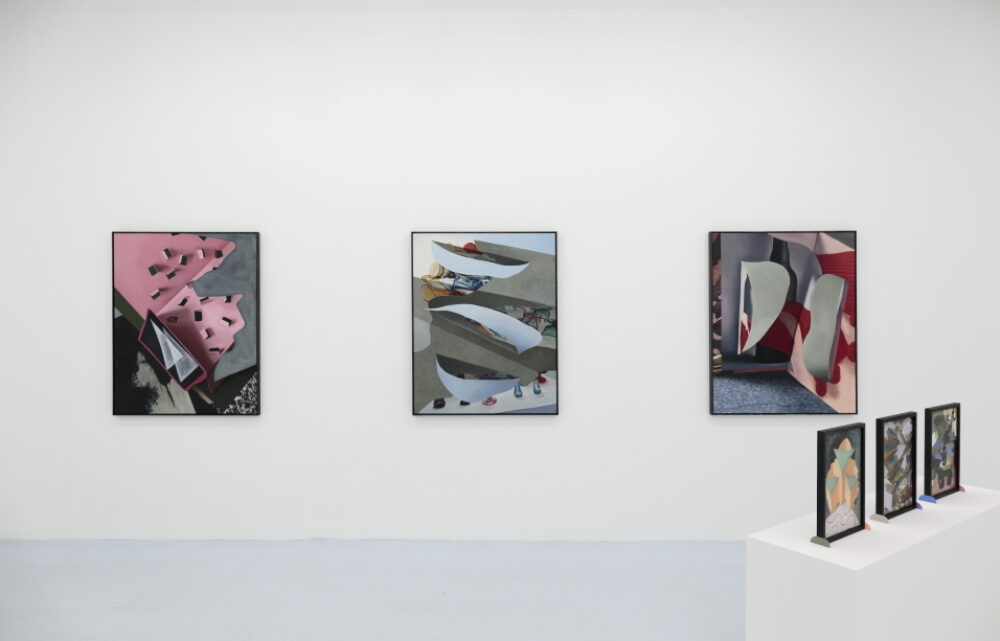
Installation View
Photo by Tim Gresham
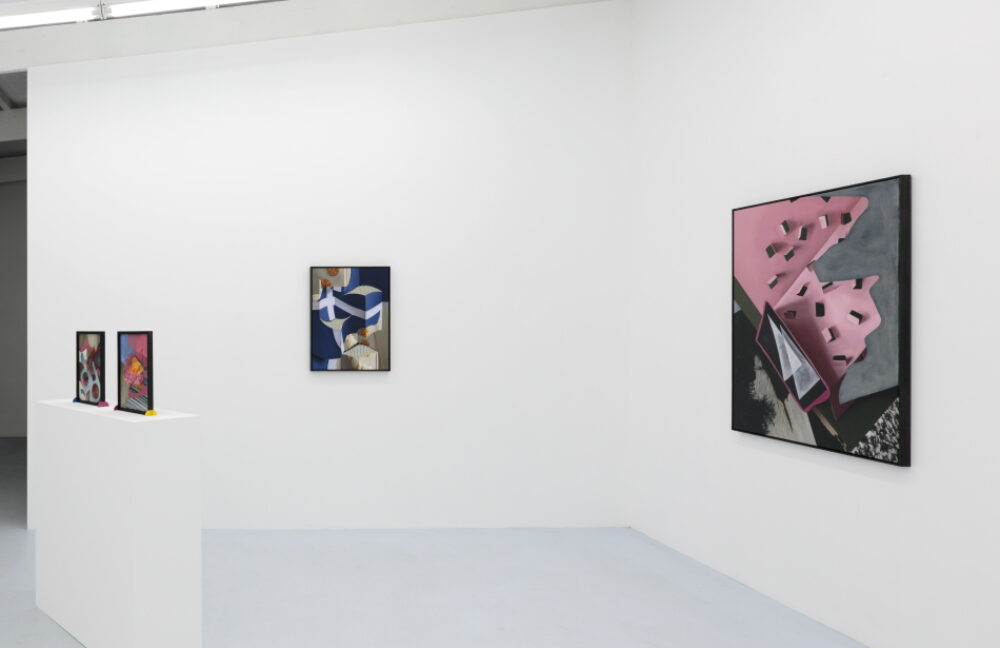
Installation View
Photo by Tim Gresham
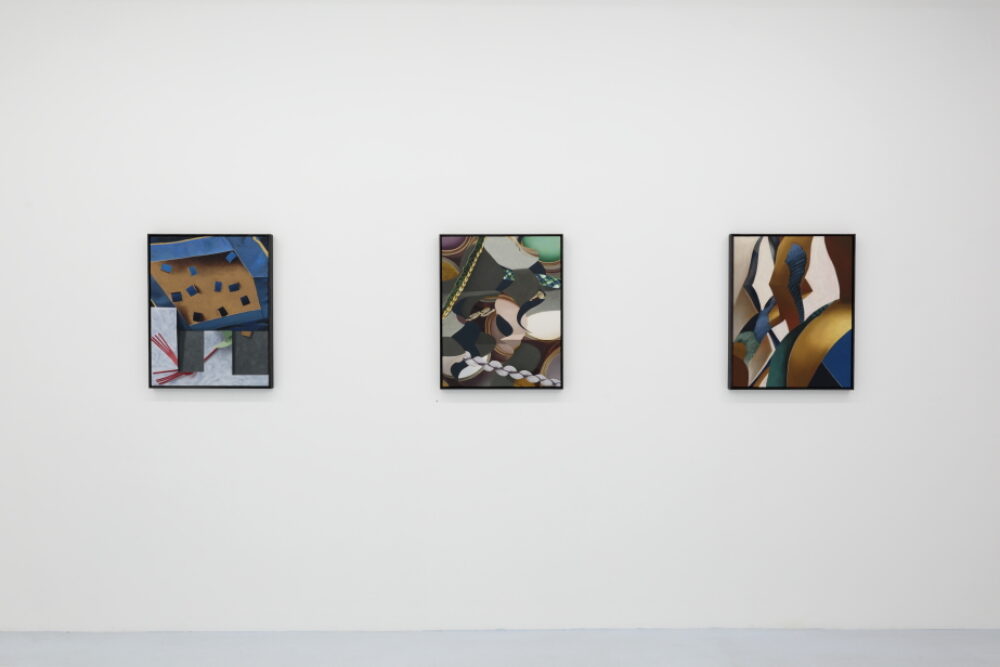
Installation View
Photo by Tim Gresham
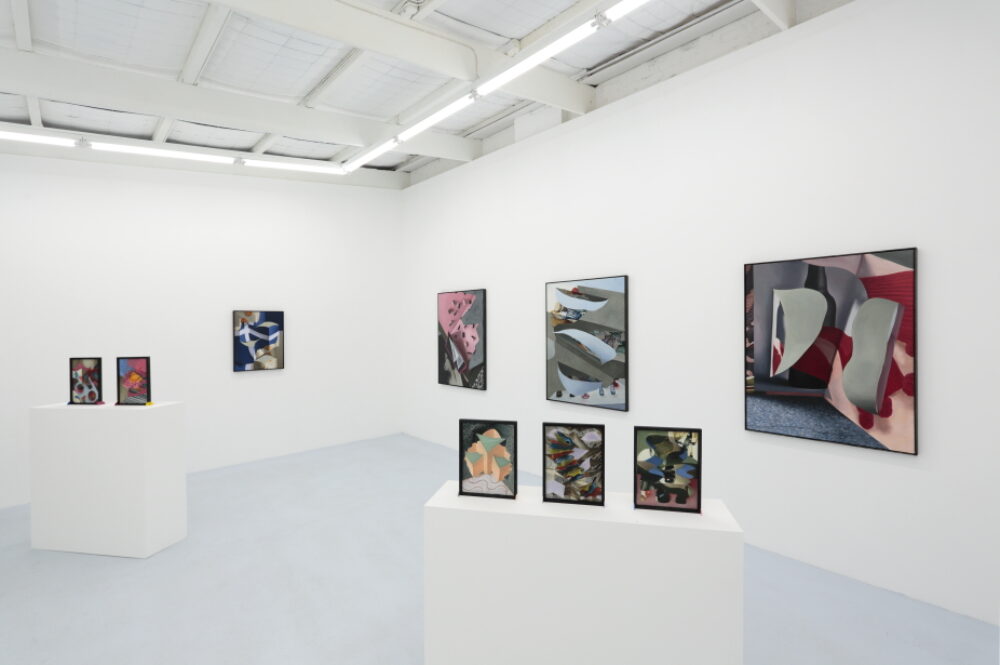
Installation View
Photo by Tim Gresham
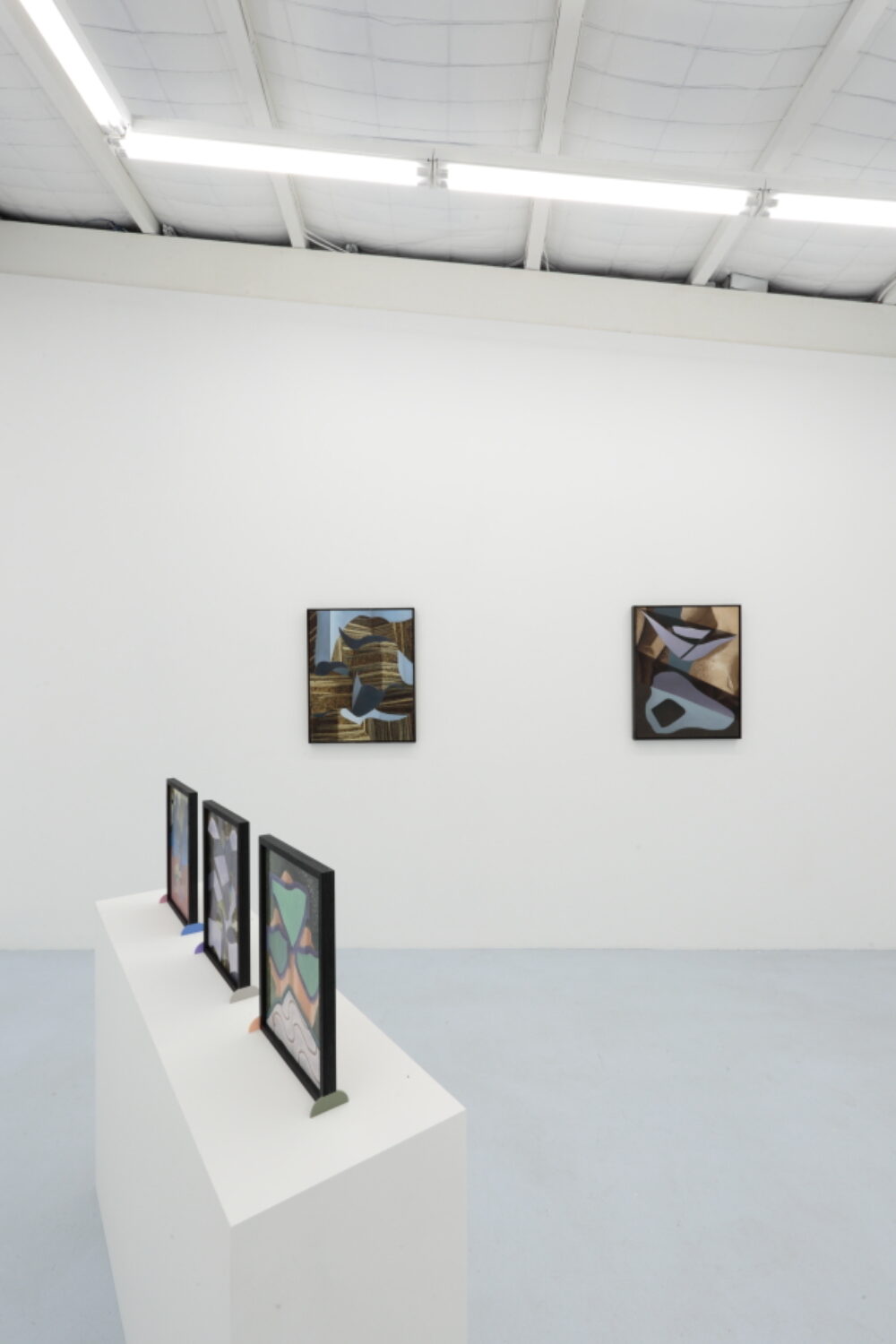
Installation View
Photo by Tim Gresham
Perpetual Emotion
2022
Oil on linen
125 x 100cm
Amber Wrap
2022
Oil on linen
75 x 59cm
Unfolding Out
2022
Oil on linen
75 x 59cm
Garland
2021
Oil on front and back of glass, freestanding frame with acrylic feet
37 x 29.5 x 6.5cm
Photo by Tim Gresham
Garland
Back view
Small Variations
2022
Oil on linen
125 x 100cm
Restless Interactions
2022
Oil on linen
125 x 100cm
Pink Sun
2021
Oil on front and back of glass, freestanding frame with acrylic feet
37 x 29.5 x 6.5cm
Photo by Tim Gresham
Pink Sun
Back View
Redecorating
2022
Oil on linen
75 x 59cm
Standing on Three Feet
2021
Oil on front and back of glass, freestanding frame with acrylic feet
37 x 29.5 x 6.5cm
Photo by Tim Gresham
Standing on Three Feet
Back view
Forest Voice
2022
Oil on linen
75 x 59cm
Bright Eyes, Bright Edges
2022
Oil on linen
75 x 59cm
Rope Openings
2021
Oil on front and back of glass, freestanding frame with acrylic feet
37 x 29.5 x 6.5cm
Photo by Tim Gresham
Rope Openings
Back view
Big F
2022
Oil on linen
75 x 59cm
Circle Silhouette
2021
Oil on front and back of glass, freestanding frame with acrylic feet
37 x 29.5 x 6.5cm
Photo by Tim Gresham
Circle Silhouette
Back view
Installation View
Photo by Tim Gresham
Installation View
Photo by Tim Gresham
Installation View
Photo by Tim Gresham
Installation View
Photo by Tim Gresham
Installation View
Photo by Tim Gresham